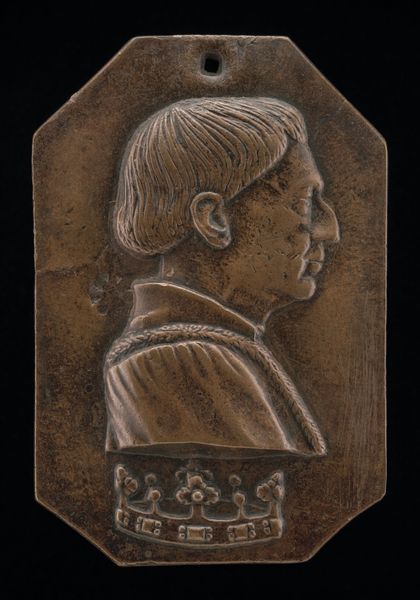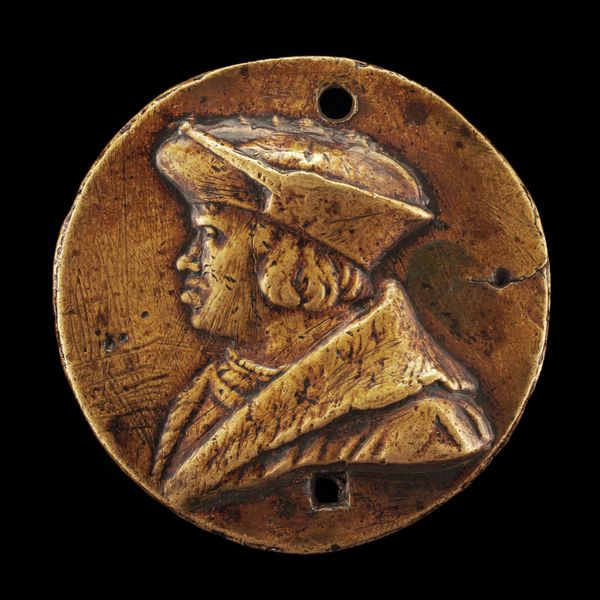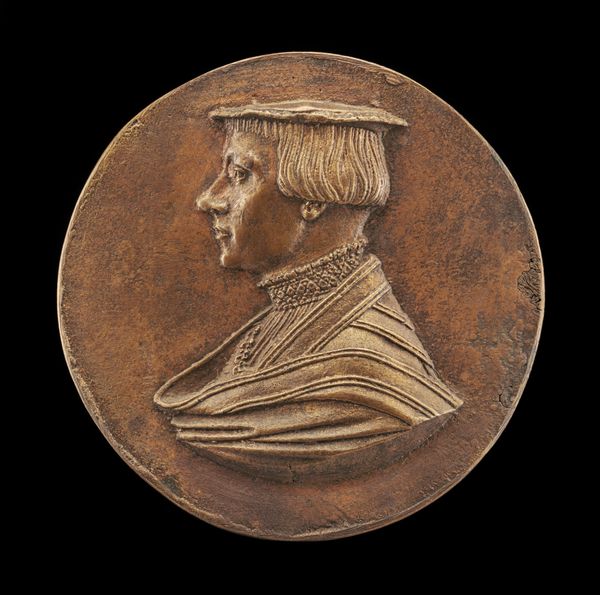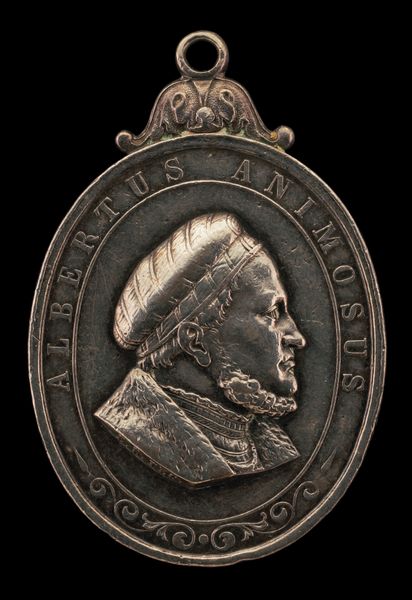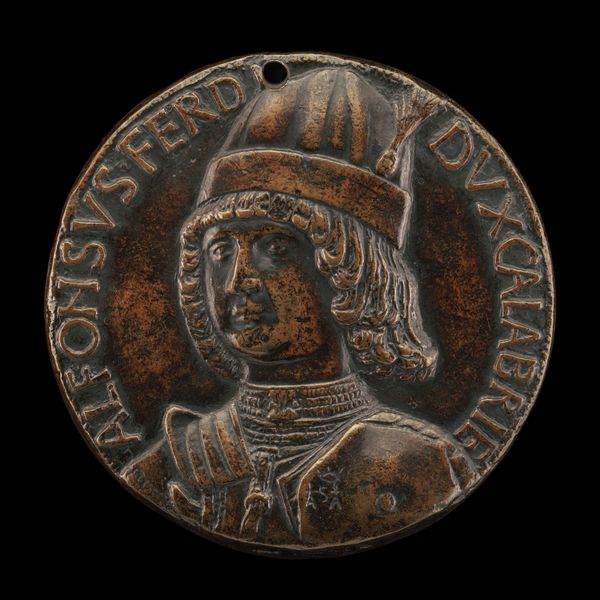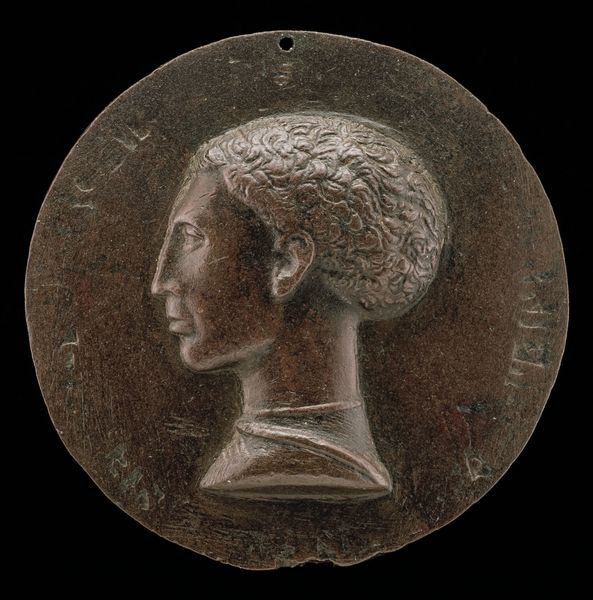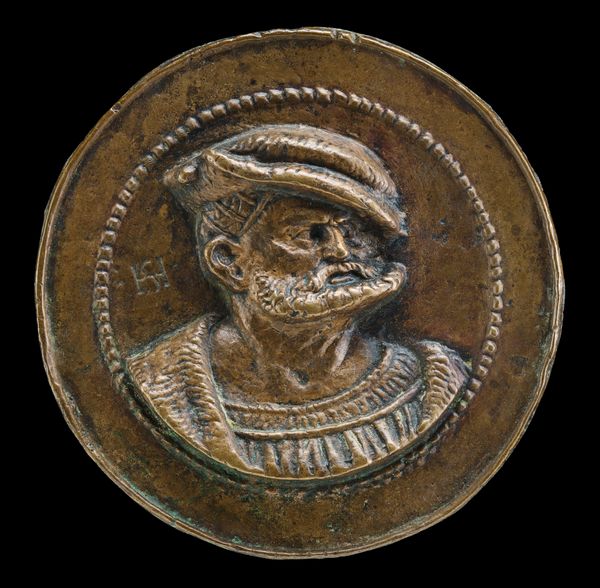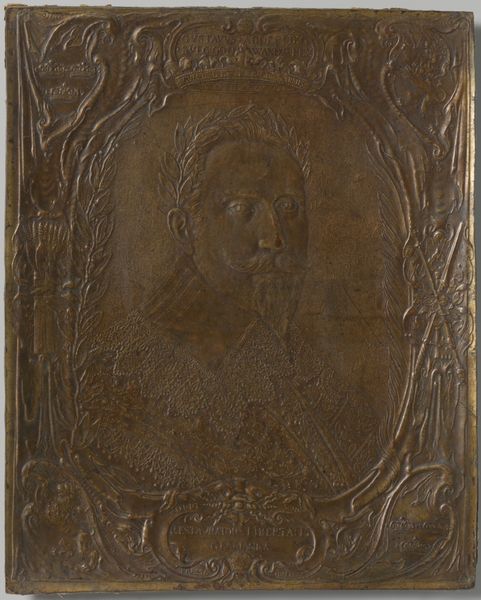
Guilio Cesare Varano, c. 1430-1502, Lord of Camerino c. 1444 - 1462
0:00
0:00
relief, bronze, sculpture
#
portrait
#
medal
#
stone
#
sculpture
#
relief
#
bronze
#
sculpture
#
italian-renaissance
#
statue
Dimensions: overall: 5.65 x 4.44 cm (2 1/4 x 1 3/4 in.) gross weight: 88.92 gr (0.196 lb.)
Copyright: National Gallery of Art: CC0 1.0
Curator: This is a bronze relief portrait of Guilio Cesare Varano, Lord of Camerino, dating from approximately 1444 to 1462. The artist is Antonio Marescotti. Editor: Immediately, I'm struck by the cold, metallic feel, contrasting with the evident humanity of the subject. The profile is sharp, clean. There's a tension between the rigid medium and the attempt to capture a likeness. Curator: Absolutely. The relief medium itself speaks to a specific type of Renaissance patronage. Varano, as Lord, would commission such a piece to project power, to solidify his legacy. It’s an interesting dance between artistic expression and political agenda. Editor: I’m curious about the bronze itself. Was it locally sourced? Who were the artisans involved in the casting? Bronze isn't just bronze, it’s the story of the furnaces, the molds, the labor… all those things contribute to the final object. It seems like the handcraft is downplayed to better show status and power. Curator: Precisely. Though the casting itself demanded considerable skill, its primary purpose was not to showcase the skill for its own sake but rather to translate the image of Varano into a more durable and reproducible format. Consider how a ruler’s image circulates and builds authority. Editor: Still, it's compelling to me that we can run our fingers along these indentations, experiencing how someone molded hot material. These marks remind us that materials were handled, that there’s tactility here that photos cannot capture. Curator: That physicality brings us closer to understanding its cultural significance. The work serves as a lasting embodiment of Varano's status within his domain, subtly but forcefully shaping his public image for both his contemporaries and future generations. It reflects the political landscape of the Italian Renaissance and its obsession with celebrity and permanence. Editor: Thinking of labor, scale and economy really help consider power in relation to production. It helps connect materials, production and representation. Curator: And that connection truly underscores the interplay between art, politics, and power in the Renaissance. Editor: A solid connection that goes far beyond what the eye can see at first glance.
Comments
No comments
Be the first to comment and join the conversation on the ultimate creative platform.
